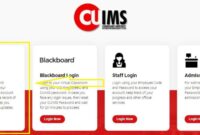CUIMS
CUIMS: A Comprehensive University Information Management System
In the rapidly evolving landscape of higher education, universities worldwide face the challenge of managing an ever-increasing volume of data and information efficiently. To address this issue, many institutions have turned to technology-driven solutions, one of which is the Comprehensive University Information Management System (CUIMS). CUIMS is a sophisticated software platform designed to streamline and centralize the various administrative, academic, and financial processes of a university. In this article, we will explore the significance and benefits of CUIMS in the modern educational ecosystem.

What is CUIMS?
CUIMS is a comprehensive software suite specifically tailored for universities and other higher education institutions. It provides a unified platform that integrates various systems, databases, and modules to facilitate smoother operations across different departments and administrative units.
CUIMS, or Customer-User Interaction Management Systems, are software applications that help businesses manage their customer and user interactions. They can be used to track customer support tickets, manage social media interactions, and collect customer feedback. CUIMS can also be used to automate tasks such as sending out marketing emails or generating reports.
This sophisticated system incorporates a wide range of functionalities, including but not limited to:
- Student Information Management: CUIMS simplifies the process of student enrollment, admission, registration, and course management. It maintains a centralized database with student profiles, academic records, and attendance details.
- Faculty and Staff Management: CUIMS handles the records of faculty and staff members, including their qualifications, designations, attendance, and performance evaluations.
- Academic Administration: The system manages academic calendars, exam schedules, and grading, making it easier for universities to handle complex academic processes.
- Financial Management: CUIMS facilitates budgeting, expense tracking, payroll management, and financial reporting for the university’s administration.
- Library Management: It helps in maintaining a catalog of books, journals, and digital resources, enabling efficient library operations.
- Hostel and Accommodation Management: CUIMS assists in managing student accommodation, hostel allotments, and related facilities.
- Online Learning and E-Learning: Many CUIMS implementations integrate e-learning platforms and online course management systems to enhance remote learning capabilities.
- Communication and Collaboration: CUIMS often includes tools for internal communication, announcements, and collaboration among university stakeholders.

Why Use CUIMS?
There are many benefits to using CUIMS. They can help businesses to:
- Improve customer satisfaction: CUIMS can help businesses to track customer interactions and identify areas where they can improve. This can lead to a better customer experience and increased customer loyalty.
- Reduce costs: CUIMS can help businesses to automate tasks and streamline their customer support processes. This can lead to reduced costs and increased efficiency.
- Gain insights into customer behavior: CUIMS can collect data on customer interactions, which can be used to gain insights into customer behavior. This information can be used to improve products and services, target marketing campaigns, and make better business decisions.
Advantages of CUIMS:
- Streamlined Processes: CUIMS streamlines various administrative and academic processes, reducing manual paperwork and redundant tasks. This optimization leads to enhanced efficiency and productivity across the institution.
- Data Centralization and Security: CUIMS centralizes data, ensuring that critical information is securely stored and easily accessible to authorized personnel. This enhances data security and minimizes the risk of data breaches.
- Improved Decision Making: With access to real-time data and comprehensive reports, university administrators can make informed decisions promptly. CUIMS provides insights that aid in strategic planning and resource allocation.
- Enhanced Student Experience: CUIMS improves the overall student experience by enabling online registrations, access to course materials, and timely updates on academic progress.
- Better Resource Management: By automating various processes, CUIMS helps universities optimize resource utilization, leading to cost savings and a more sustainable operation.
- Accurate Reporting and Compliance: CUIMS generates accurate and standardized reports, ensuring universities comply with regulatory requirements and accreditation standards.
- Scalability and Customization: CUIMS can be customized to meet the specific needs of individual universities. It is scalable, allowing institutions to expand and adapt the system as they grow.
Challenges and Considerations:
While CUIMS offers numerous benefits, implementing and maintaining such a system can be a complex undertaking. Some challenges that universities may face include:
- Cost: The initial setup and ongoing maintenance costs of CUIMS can be significant. However, the long-term benefits often outweigh the investment.
- Training and Adoption: Successfully implementing CUIMS requires thorough training for staff and faculty members. Encouraging adoption across the institution may also require change management strategies.
- Data Migration: Migrating existing data from legacy systems to CUIMS can be a time-consuming and delicate process, necessitating data accuracy and integrity.
- Integration with Existing Systems: Universities may already have various standalone systems in place. Ensuring seamless integration with CUIMS is crucial for maximizing its effectiveness.
How Do CUIMS Work?
CUIMS typically work by gathering data from a variety of sources, such as customer support tickets, social media interactions, and surveys. This data is then stored in a central repository, where it can be accessed by authorized users. CUIMS also typically include a variety of features that allow users to track customer interactions, manage customer feedback, and automate tasks.
Types of CUIMS
There are two main types of CUIMS: on-premises and cloud-based. On-premises CUIMS are installed on a company’s own servers, while cloud-based CUIMS are hosted by a third-party provider. Cloud-based CUIMS are typically more scalable and easier to manage than on-premises CUIMS.
Benefits of Cloud-Based CUIMS
Cloud-based CUIMS offer a number of benefits over on-premises CUIMS, including:
- Scalability: Cloud-based CUIMS can be easily scaled up or down to meet the needs of a business. This is in contrast to on-premises CUIMS, which can be more difficult to scale.
- Cost-effectiveness: Cloud-based CUIMS are typically more cost-effective than on-premises CUIMS. This is because businesses do not need to purchase and maintain their own hardware and software.
- Management: Cloud-based CUIMS are typically easier to manage than on-premises CUIMS. This is because businesses do not need to worry about the security and maintenance of the software.
- https://appkamods.com/students-loans-in-cameroon-availability-of-student-loans-in-cameroon-loanapply/
Conclusion
CUIMS are a valuable tool for businesses that want to improve customer satisfaction, reduce costs, and gain insights into customer behavior. They can be used to track customer interactions, manage customer feedback, and automate tasks. Cloud-based CUIMS are typically more scalable, cost-effective, and easier to manage than on-premises CUIMS.
In conclusion, CUIMS stands as a valuable asset for universities seeking to optimize their administrative and academic processes. The system’s ability to streamline data management, enhance decision-making, and improve overall efficiency can significantly benefit both the institution and its stakeholders. However, universities must carefully consider their specific requirements, implementation strategy, and change management to successfully embrace this technological advancement. By doing so, they can position themselves for greater success in the ever-evolving world of higher education.
